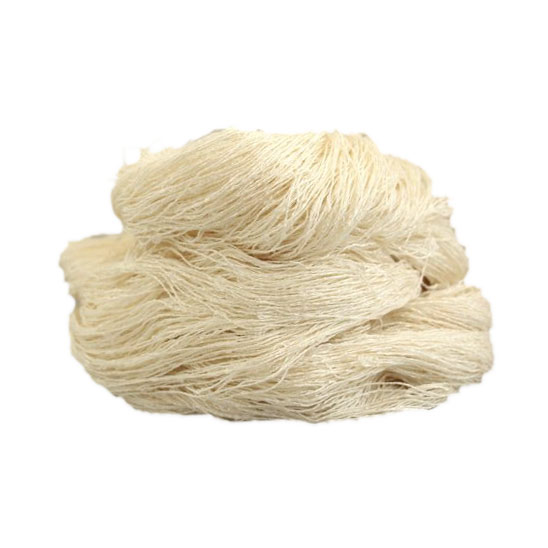Yarn from Banana Fiber
Fiber > Organic > Plant based
Description
Banana fiber harvested from the pseudostems and leaves of the plant has been used for textiles in Asia since at least the 13th century. Both fruit-bearing and fibrous varieties of the banana plant have been used. In the Japanese system Kijōka-bashōfu, leaves and shoots are cut from the plant periodically to ensure softness. Harvested shoots are first boiled in lye to prepare fibers for yarn-making. These banana shoots produce fibers of varying degrees of softness, yielding yarns and textiles with differing qualities for specific uses. For example, the outermost fibers of the shoots are the coarsest, and are suitable for tablecloths, while the softest innermost fibers are desirable for kimono and kamishimo. This traditional Japanese cloth-making process requires many steps, all performed by hand.
In India, a banana fiber separator machine has been developed, which takes the agricultural waste of local banana harvests and extracts strands of the fiber.
https://en.wikipedia.org/wiki/List_of_textile_fibres
Location
